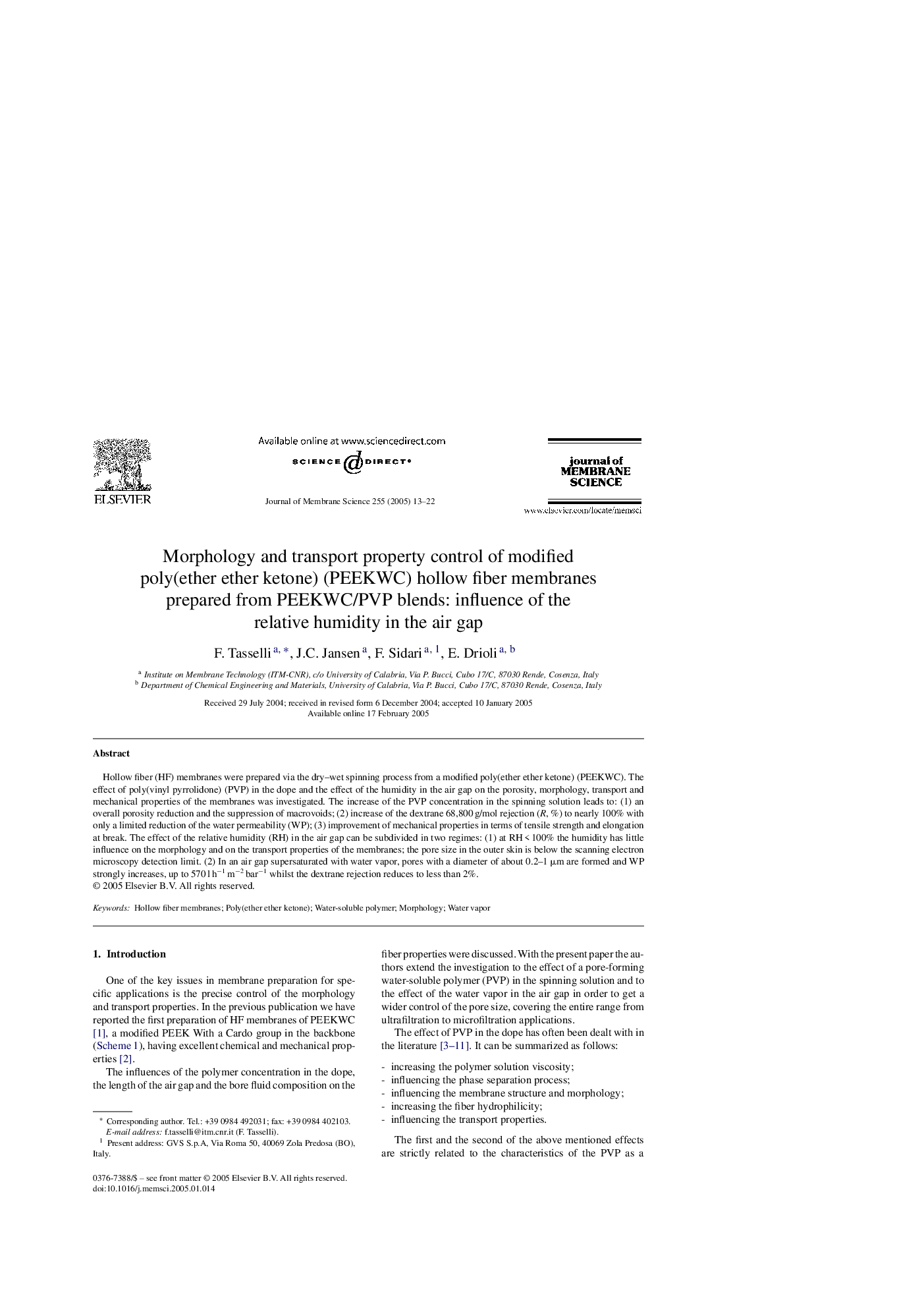| Article ID | Journal | Published Year | Pages | File Type |
|---|---|---|---|---|
| 9684828 | Journal of Membrane Science | 2005 | 10 Pages |
Abstract
Hollow fiber (HF) membranes were prepared via the dry-wet spinning process from a modified poly(ether ether ketone) (PEEKWC). The effect of poly(vinyl pyrrolidone) (PVP) in the dope and the effect of the humidity in the air gap on the porosity, morphology, transport and mechanical properties of the membranes was investigated. The increase of the PVP concentration in the spinning solution leads to: (1) an overall porosity reduction and the suppression of macrovoids; (2) increase of the dextrane 68,800 g/mol rejection (R, %) to nearly 100% with only a limited reduction of the water permeability (WP); (3) improvement of mechanical properties in terms of tensile strength and elongation at break. The effect of the relative humidity (RH) in the air gap can be subdivided in two regimes: (1) at RH < 100% the humidity has little influence on the morphology and on the transport properties of the membranes; the pore size in the outer skin is below the scanning electron microscopy detection limit. (2) In an air gap supersaturated with water vapor, pores with a diameter of about 0.2-1 μm are formed and WP strongly increases, up to 570 l hâ1 mâ2 barâ1 whilst the dextrane rejection reduces to less than 2%.
Related Topics
Physical Sciences and Engineering
Chemical Engineering
Filtration and Separation
Authors
F. Tasselli, J.C. Jansen, F. Sidari, E. Drioli,
